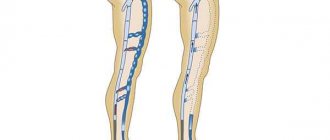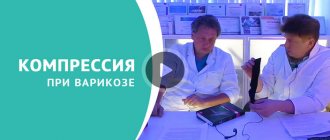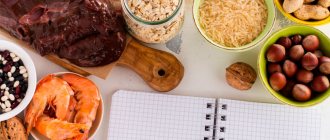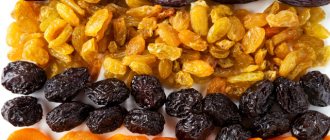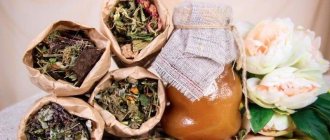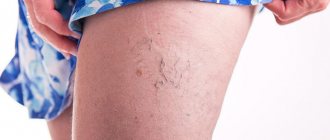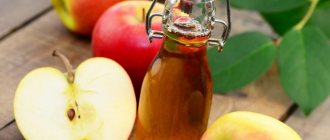Causes and treatment methods for varicose veins
The main reasons leading to the development of varicose veins are quite simple:
- Heredity. If someone in your family, on the paternal or maternal side, had this disease, then with a high degree of probability, under certain conditions, you may also develop varicose veins.
- Passive, that is, minimally active lifestyle. This may also apply to the type of work. During sedentary work, blood stagnates in the vessels and cannot circulate normally, which leads to their stretching and deformation.
Excess weight, as well as the consequences of women carrying a child. Here the excessive load on the vessels, exerted by the pressure of the fetus during pregnancy, as well as fatty deposits, plays a role.
Varicose veins are also dangerous because of their consequences. It can provoke the development of thrombosis, which is even worse, since in this situation there is a threat to life.
At the moment, there is far more than one method of combating varicose veins. Certain methods of treating varicose veins have contraindications and are rarely used independently. The most effective method of treatment is considered to be a comprehensive one, which includes several specific types of therapies.
You can often find methods for treating varicose veins using folk remedies. Among them: infusions, ointments, and also creams, which, in addition to horse chestnut, include herbs, vegetables or berries, which also have useful medicinal properties and rare contraindications.
The most popular are:
- wormwood, nettle, common hop, nutmeg;
- Kalanchoe;
- potato;
- apples;
- chickweed (chickweed);
- mountain arnica.
This is just part of the list of remedies that will help in the fight against varicose veins.
Cautions
The use of funds based on this remedy has temporary and absolute prohibitions. The main contraindications for use may be:
- breastfeeding and pregnancy,
- hypotension,
- internal bleeding,
- kidney damage,
- low platelet count,
- constipation, which is associated with impaired peristalsis,
- acute stage of digestive system disease.
Before using these recipes, you should consult your doctor.
Horse chestnut: medicinal properties and contraindications
This plant provides all its medicinal properties thanks to the trace elements it contains. Preparations based on horse chestnut restore the walls of blood vessels and capillaries, make the blood more fluid, so the development of varicose veins when used is minimized.
Chestnut contains tannins, bioflavonoids, saponins, sterols, coumarin, rutin, lutein and astralagin . To some extent, the life-giving properties of chestnut are manifested thanks to the esculin and escin included in the composition:
- Escin reduces the permeability of blood vessels, tones them, and also reduces blood viscosity;
- Esculin strengthens blood vessels. It prevents blood clots.
Due to its strong effect on the human body, regardless of the recipe for using horse chestnut, it can cause side effects . Among them: nausea; vomit; diarrhea; allergies in the form of itching, burning or rash. All these manifestations practically never occur. But, as you know, contraindications are inherent in any medicine.
Horse chestnut contraindications:
- during pregnancy in the first trimester, as well as for nursing mothers, as part of tablet preparations;
- people with diseases associated with blood clotting;
- patients with hypotension, renal failure, long-term gastrointestinal ailments;
- patients with excessive susceptibility, as well as allergy sufferers.
For these reasons, consultation with doctors is mandatory before using horse chestnut or medications containing this medicinal plant.
Folk recipes
Horse chestnut is most popular as part of home folk remedies for the treatment of varicose veins due to the ease of preparing decoctions, infusions, tinctures, ointments, and rubs based on this plant.
Alcohol tincture
To prepare chestnut tincture for varicose veins, you need 100 grams of peeled and crushed fruits of the plant per glass of alcohol or liter of vodka: place the mixture in a glass container, leave for a couple of weeks in the dark, filter and drink 30 drops per half glass of water 3 times a day.
The prepared tincture can be used for external rubbing: in this case, 300 ml of alcohol per 100 grams of peeled and crushed fruit is sufficient. The mixture is infused for two weeks, filtered and used for compresses or rubbing the skin of the lower extremities for varicose veins. The course is a month, a break is two weeks, then repeated.
It should be remembered that it is better to buy raw materials for the preparation of folk remedies at a pharmacy, since it is problematic to fulfill all the requirements for its collection and processing.
Bolotov's decoction
For 20 raw unripe fruits without skin, 3 liters of cold boiled water, half a glass of whey, a glass of granulated sugar: cut each fruit into two parts, mix water, whey, sugar, add half the chestnut. mixture, leave at room temperature for several weeks, stir again and refrigerate, drink the medicine 2 times a day half an hour before meals, a quarter glass.
Horse chestnut ointment
The most popular ointments for the treatment of varicose veins are ointments based on horse chestnut, which relieve inflammation, pastiness of the lower extremities, and remove rosacea - the vascular network. There are several ways to prepare the tincture:
- One glass of peeled, crushed chestnut kernels for two tablespoons of melted pork fat in a water bath, add a tablespoon of sea buckthorn oil, heat the mixture in a water bath for several hours, let it sit for an hour and use as intended;
- seven grains of horse chestnut per half liter of vegetable oil, place in a water bath for two hours, stir until smooth, apply to problem areas of the skin (preferably by massage);
- To prepare a cream from 30 g of crushed plant kernels, 10 g of sage and white acacia, twice as much wormwood, a tablespoon of corn starch, 200 g of melted chicken fat: in a water bath for three hours, infusion for 12 hours. , boil, strain, cool, use overnight (the cream takes a long time to absorb);
- Chestnut gel to relieve tired legs is prepared as follows: grind the grains, dry them, cut thin slices of black bread, grease with camphor oil, sprinkle with chestnuts, and then apply these slices to problem areas under a sterile napkin overnight.
All ointments should be stored in the refrigerator.
Baths
Chestnut baths are quite effective for varicose veins: for 500 grams of crushed, peeled fruits you will need a liter, boil the mixture for a quarter of an hour, pour into a basin, pour 3 liters of water at the desired temperature, put your feet in the bowl 15 minutes before bedtime, wrap them up and lie down in bed (the effect is felt immediately). Horse chestnut goes well with decoctions of calendula, dandelion, hops, stannus, elecampane, chamomile, oak bark, and nettle.
What are the benefits of using horse chestnut in the treatment of varicose veins?
have long been known , which make it effective in the treatment of varicose veins among other varieties of this plant. It is used in many drugs. To enhance the effects of horse chestnut, other herbal preparations are often added to the composition of medicines.
Horse chestnut has the following effects on the human body:
- Strengthens vascular walls;
- Tones veins;
- Increases blood circulation in the veins;
- Reduces capillary permeability;
- Dilates blood vessels and reduces blood pressure;
- Gives your feet a feeling of lightness;
- Prevents blood clots from forming.
Collection and preparation of plants
During preparatory and assembly work, compliance with all regulatory rules is considered an important point. This will help to obtain maximum medicinal properties from the plant, limit contraindications, and the effectiveness of the finished product will noticeably increase.
To produce various medicinal preparations, almost all elements of the plant are used, including not only the fruits along with the peel, but also inflorescences, leaves and even bark.
Initial stage of procurement
The harvesting period for chestnuts, as many might assume, begins in the fall. At this time, the fruits have already reached their maximum size and are slowly ripening.
Leaves and flowers are harvested in the spring, at the time of flowering. Just at this time, the maximum number of useful elements is stored in the leaves and inflorescences.
Application
Chestnut fruits are suitable for preparing numerous medicines. To apply the product from the horse plant to painful parts of the skin, a special mixture is prepared. To do this, you will need to peel the green skin from the chestnut and grind it using a meat grinder. To obtain a denser composition, you will need to repeat this process several times or use a mortar.
Drying
The procedure for drying horse chestnut fruits is carried out in a specially prepared room for 4 weeks with stable mixing. It is worth remembering that you cannot dry it in the sun.
Contraindications for use
Pharmaceutical drugs also have their contraindications for use. These include: bleeding tendency, hemophilia, first trimester of pregnancy, lactation, allergies, exacerbation of duodenal ulcers, diabetes, low blood pressure and acute renal failure.
However, it should be emphasized that pharmaceutical preparations have a higher concentration of the active substance and have a high degree of purification, which is simply impossible to achieve at home. Of course, finished industrial products are always better than domestic ones in terms of efficiency and effectiveness.
Recipes for tinctures with horse chestnut for varicose veins
Horse chestnut tinctures have proven themselves so well that they have received approval and are often recommended for medicinal use even by the most experienced specialists who do not recognize traditional medicine.
- Alcohol tincture
To make an infusion according to the recipe, you will need to pour 50 g of chestnuts, ground with peel, into a small volume of vodka, about 1/10 of a liter. The infusion process lasts from 14 to 20 days in a place inaccessible to sunlight. Take 10 drops twice or thrice a day. Contraindicated for people suffering from alcoholism.
Infusion of chestnut inflorescences
Prepared horse chestnut flowers need to be filled with 50 grams of vodka. The duration of infusion is up to 30 days. The dose consists of 50 drops before meals.
- Chestnut flower extract
The juice of the inflorescences is also suitable for use in the treatment of varicose veins; you just need to squeeze it out. The medicinal juice should be consumed in small portions several times a day after meals. In addition, it can be used to lubricate sore areas on the legs. The properties of chestnut inflorescence juice will improve blood flow in the veins, protecting against stagnation.
How to collect and prepare
Pharmacy chains offer us a large selection of dry horse chestnut preparations. However, if the plant grows in your area, it is quite possible to prepare it for future use yourself and use it in the treatment of varicose veins. Different parts of the plant can be used, the harvesting methods are slightly different.
- The collection of leaves and inflorescences begins in May, at the time when the tree or shrub begins to bloom profusely. The raw materials are washed under running water. Dry on paper or dry cloth, laying them out in a ventilated room, hiding from direct sunlight. Such drying can take a long time, so the raw materials need to be stirred daily to prevent them from becoming moldy.
- Horse chestnut kernels are harvested in the fall, just before the fruits become round and begin to ripen. Ripe kernels do not have a high content of medicinal components, so the kernels are collected in an unripe form. If you need to clear the kernels from the green peel, then remove it with a knife.
- The fruits of the plant are often used for treatment. They are selected in an already mature state. If necessary, grind it using a meat grinder or use it whole.
- The tree bark is removed at any time and crushed before drying.
Dry the kernels, bark and fruits in the same way as the leaves - in a dark place where it is warm and has good air circulation.
Important! If drying horse chestnut is done incorrectly, the plant will be useless during treatment - it will lose the main part of its medicinal components.
Recipes for ointments and creams using horse chestnut
- Ointment with the addition of horse chestnut
To make such an ointment, according to the recipe, you will need to grind chestnuts (5 pieces) and mix them with 5 tbsp. spoons of inflorescences. Then add 0.5 liters of oil (sunflower, olive or almond).
The resulting mixture must be boiled in a water bath for 2 hours to obtain beneficial properties. After straining and cooling, it can be placed in the refrigerator for storage. Apply medicinal ointment to damaged areas of the lower extremities twice a day. If redness appears on the skin, further use of horse ointment is contraindicated.
- Cream recipe
First, the flowers are crushed. They are then filled with oil and cooled for several hours. The finished mixture is brought to a boil in a water bath. Once cooled, the mixture can be stored in the refrigerator. Use for varicose veins on bulging veins, spreading the cream in a thin layer 2-3 times a day.
Baths, decoctions and compresses
- Baths
To prepare the bath, you will need to dissolve 40 g of ointment in 2 liters of hot water. You need to steam your feet until the water becomes warm. Then wrap your feet in a towel and lie down for about 60 minutes, elevating them slightly.
Decoction
For the decoction recipe, you need to take a certain amount of chestnut peel and add 2 liters of water. After boiling for ten minutes, the broth should be infused. To do this, you can leave it overnight. You should drink this decoction for 14 days, 1 tablespoon once daily. There are practically no contraindications.
- Compress
To prepare a horse chestnut compress for varicose veins, according to the recipe, you will need large quantities of fruits or leaves. After grinding, the contents are filled with vodka. After two days, you can use chestnut decoction. A soft cloth soaked in the solution is applied to areas with damaged veins.
Use of horse chestnut in pharmacology
Due to the beneficial medicinal properties of chestnut, rare contraindications and the presence of a large number of useful elements that make it truly an effective remedy, it is widely used in pharmacology in the manufacture of medicines for varicose veins.
List of drugs that have proven themselves to be the best:
- Aescin - in tablets and gel;
- Varicobooster - cream for varicose veins
- Venarus – in tablets;
- Venitan – in the form of a gel;
- Venitan – in the form of a cream;
- Venozol - in the form of an ointment;
- Healthy - cream-wax
- Herbion Esculus - in the form of a gel;
- Girudoven – in videgel;
- Clean Legs – in the form of a cream;
- Royal tread - in the form of a gel;
- Escisan - in tablets;
- Aescusan - in drops.
These medicinal products, one way or another, serve to improve blood circulation and tonify the veins; giving veins strength and elasticity, relieving pain, swelling, and inflammatory processes.
However, we should not forget that the use of drugs with horse chestnut is effective only in the early stages of the development of the disease, as well as for preventive purposes. In a more advanced state, this treatment technique will not be enough. In any case, the treatment of varicose veins should use an integrated approach under the supervision of a physician.
Medicinal preparations with the addition of horse chestnut are quite common in use, so they can be bought in almost every pharmacy. If such medications are unavailable, there is always the opportunity to place an order online, via the Internet. In this case, after filling out a certain form and making payment, the required drug will be delivered to you directly to your home.
And we should not forget that self-medication is always fraught with serious and sometimes irreversible consequences.
This is interesting:
- Venotonics for varicose veins of the legs - drugs for the treatment of varicose veins. Enlarged veins are the No. 1 problem of our time. Both women and men of different ages are susceptible to this disease...
- Diet for varicose veins on the legs - nutrition according to the rules In the process of treatment, diet for varicose veins on the legs, nutrition and its restrictions play a very important role...
- Varicose veins on the legs: symptoms and signs Varicose veins are a disease of the 21st century. Sedentary lifestyle, static work, high heels - everything...
